11 Best SQL Software & Query Optimization Tools 2023 (Paid & Free)
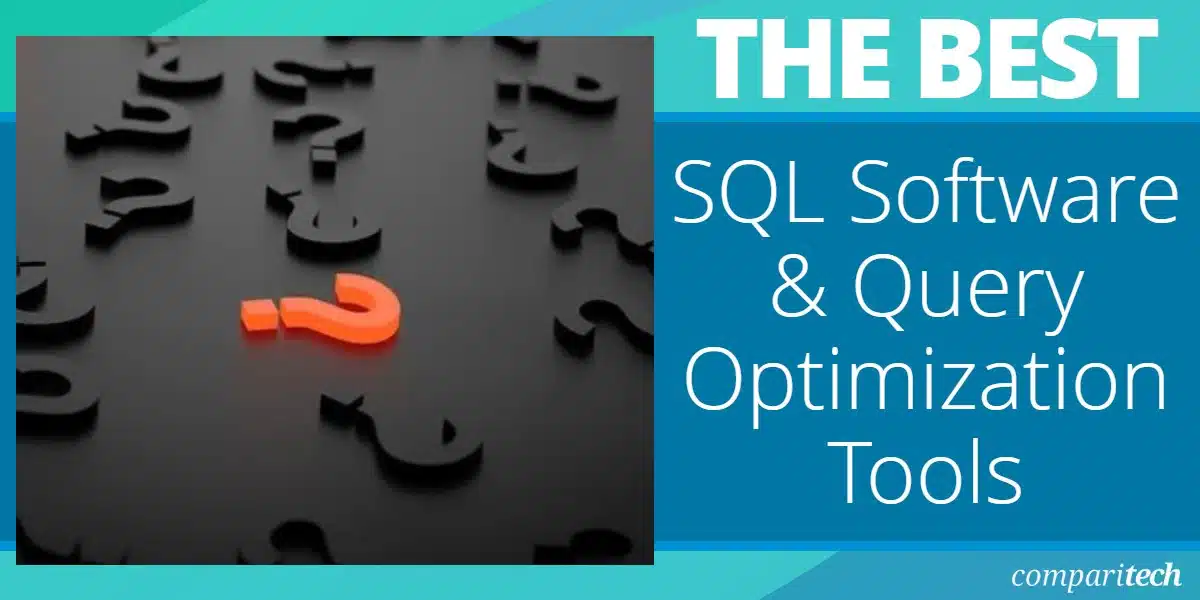
For comprehensive Microsoft monitoring, the right SQL query optimizer is a must. In this article, we’re going to look at the best software.
Here is our list of the best SQL software and query optimization tools:
Why do I need an SQL server tuning tool?
Tuning SQL server queries is essential for optimizing query performance and is part of all good database management software. If queries are running slow or failing, then performance monitoring and SQL tuning can help to make your code more efficient. However, doing this manually without a query optimization tool is difficult because you need to do everything manually with limited functionality.
Finding database queries that aren’t up to scratch is a painstaking task. Server optimization tools are invaluable because they allow you to view queries with poor performance and locate resource bottlenecks more easily. They also allow you to gather performance statistics which can help to improve SQL queries in the future.
Many tools can do this automatically with alerts and automated responses so that queries will be improved without the need for user intervention. Using an SQL server tuning tool helps to improve your server performance and increases your responsiveness to managing server problems. For example, with a Structured Query Language monitoring tool, you can tune SQL server queries before you start experiencing performance issues.
How to Optimize & Tune SQL Queries
SQL query optimization is part of the business process. Your SQL queries might not be bringing back the right information because the person that wrote the query didn’t understand the data request and hasn’t studied the structure of the database. So, optimization begins right at the creation of the database and each time a request for data arises.
- Understand the core data of the business Focus the design of the database on tables that hold the core data of the business and normalize tables accordingly.
- Make full use of indexes Read through the list of indexes on the tables that you are joining together and make sure you use these as often as possible. Look out for composite indexes, adding an extra field in your join could speed up the search.
- Find out how the RDBMS implements WHERE clauses Some RDBMSs work through the lines in the WHERE clause from the bottom up.
- Sequence joins in the WHERE clause Order your WHERE clause to filter out the most records with the first join. Make joins on ID fields first and leave text field joins to the very end of the query.
- Tighten up joins Avoid outer joins wherever possible. Make sure that you have fully linked records in tables and that you are not creating a “times.”
- Avoid comparisons Make concrete links between tables first and leave filters that use lists or wildcards to the end of the execution.
- Look for resource spikes during execution Queries that hit the performance limits of the RDMS will always take a long time to run.
- Use SQL performance tuning tools Experienced programmers understand SQL performance intuitively; everyone else needs a tool that can trace the implementation of the SQL line by line and identify joins that require excessive resources.
Related post: Best Tools for Oracle Database Management & Troubleshooting
Key Features of the SQL Query Optimization Tools:
- SQL Tuning – SQL query optimization tools with SQL tuning rewrite SQL statements to improve server performance and speed up data retrieval.
- Monitor Cloud Databases – Many SQL query optimizers can monitor relational databases in the cloud.
- Optimize SQL Queries Online – Optimize SQL queries remotely via your device or web browser.
Mục lục bài viết
Our methodology for selecting SQL query optimization tools
We reviewed the market for SQL software and analyzed the options based on the following criteria:
- An SQL query editor that includes color coding for different categories of keywords
- A brackets matcher in the editor
- A suggested query clause reorganizer
- The ability to analyze the indexes in the instance and suggest improvements
- Suggested improvements in table normalization and possible denormalization
- A free trial or a money-back guarantee for a risk-free assessment period
- A service that will improve efficiency and repay its purchase price
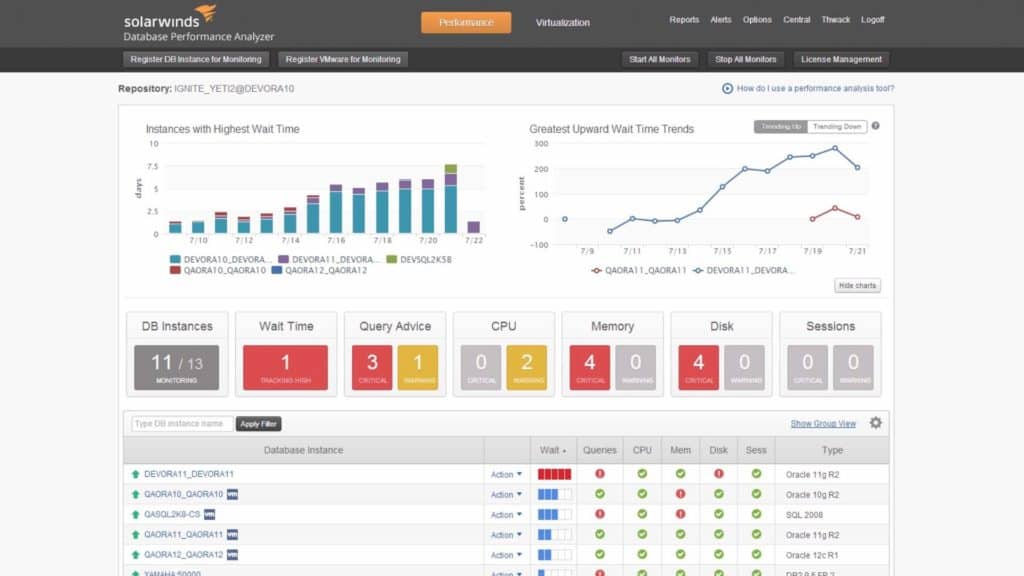
First up on this list we have SolarWinds Database Performance Analyzer. SolarWinds Database Performance Analyzer is a SQL query optimizer that was built for query performance monitoring and tuning. With this management tool, you can monitor the SQL server performance, Client Machines, Users and Applications through a dashboard. You can view graphs of all these entities to find any larger performance trends.
Key Features:
- SQL query optimizer
- Database performance monitor
- Application dependency mapping
- Performance graphs
- Alerts for performance issues
With SolarWinds Database Performance Analyzer, you can monitor databases 24/7 for performance anomalies. Views show data like Top Waits for SQL (Hours) which help to show the state of the network. If your network performance is declining SolarWinds Database Performance Analyzer gives you the heads-up you need to start troubleshooting for a solution.
You can use SolarWinds Database Performance Analyzer to monitor the following database management systems: Azure SQL databases, MySQL, Aurora, ASE, Oracle, MariaDB, and IBM Db2. The status of your database is shown via an overview page which details Wait, Tuning, CPU, memory, and disk status. All of this information is color-coded so that you can see promptly if there is a problem that needs to be addressed.
Pros:
- Monitors Azure SQL databases, MySQL, Aurora, ASE, Oracle, MariaDB, and IBM Db2
- Live database resource usage reports
- Database object tuning guides
- SQL query optimization guidance
- Spots resource locks
Cons:
- No SaaS version
SolarWinds Database Performance Analyzer is an excellent choice for buyers looking for a full-featured SQL query optimization tool that is compatible with other SolarWinds products. In our view, it’s one of the best SQL server monitoring and performance tools on the market. SolarWinds Database Performance Analyzer is available from a price of $2,045 (£1,541). There is also a 14-day free trial which you can download below.
EDITOR’S CHOICE
The Database Performance Analyzer stands above the competition offering cross-platform support for on-premises installation or launch on the cloud. In-built, high-powered anomaly detection engine, index and query tuning advisors and an interface that doesn’t leave you guessing. We love the real-time and historical data presentation.
Get 14-Day Free Trial: solarwinds.com/database-performance-analyzer
OS: Windows, Linux or Unix, Azure Marketplace, or AWS launch
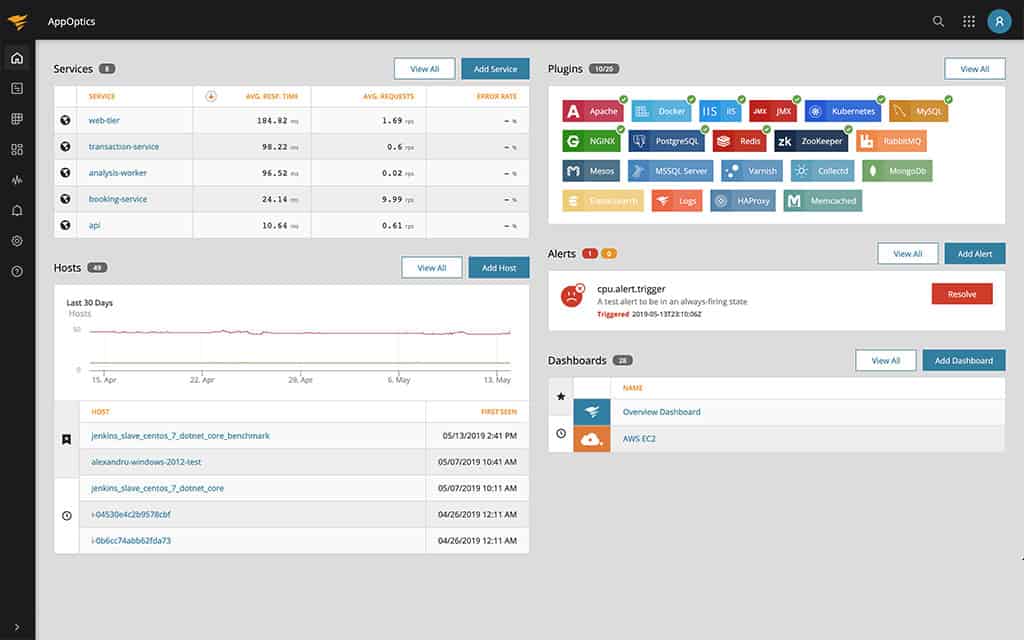
AppOptics APM supervises the performance of applications and the infrastructure that supports them. This SQL management tool is able to identify the true causes of applications performance impairment, whether that be incorrectly configured settings, poor coding, or a problem with the capacity of the hardware that runs the application and carries its traffic to users.
Key Features:
- Application discovery
- Dependency mapping
- Root cause analysis
- Resource shortage forecasts
Different applications with specialist operations can’t be effectively monitored by one unified application monitoring system. So, AppOptics APM has specialized sections that focus on specific application types. One of these specialist sections focuses on database performance. The database tuning capabilities of AppOptics can interact with many different makes of databases, including MySQL, Microsoft SQL Server, Oracle, Postgres, and Apache database management systems.
The AppOptics database tuner focuses on the efficiency of SQL queries. It examines the effect of each query execution, looking for queries that take a long time to retrieve results and examining why they are so inefficient. The tool starts up a trace file that lists all of the transactions needed to fulfill a request from a query. This highlights inefficient joins and columns that need to be indexed.
An analysis engine AppOptics system also exercises all code that calls SQL queries to ensure that they interact with the database efficiently. The code efficiency module examines all programs, not just those that involve database interaction.
Pros:
- Monitors SQL Server, MySQL, Oracle, Postgres, and Apache
- Database tuning
- SQL query optimizer
- Identifies long-running queries
Cons:
- Free trial for only 14 days
As a cloud-based service, AppOptics can analyze databases no matter where they are hosted – on your site, on a remote site, or in the cloud. It’s a solid choice and one of the best SQL server products you will find. The service is charged for by annual subscription and you can get a 14-day free trial to check out AppOptics APM yourself.
AppOptics APM
Start 14-day FREE Trial
Related post: Best PostgreSQL Monitoring Tools
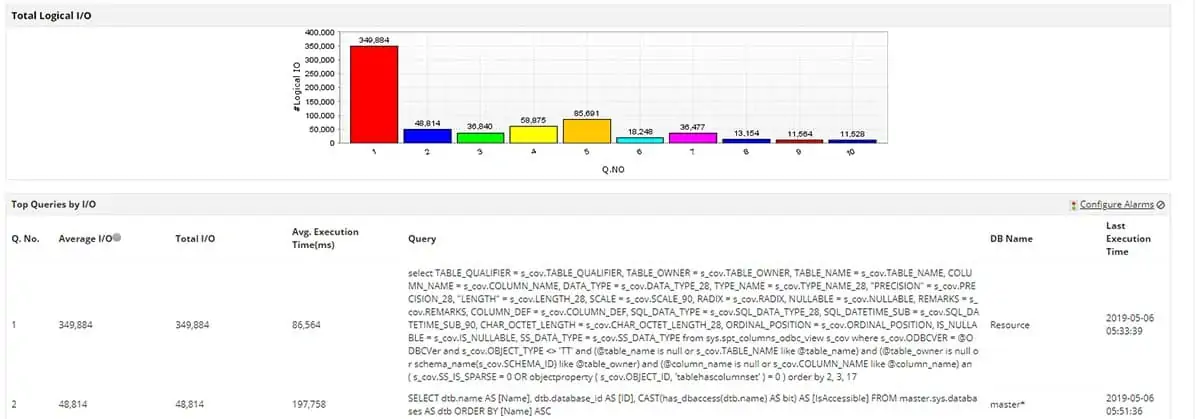
Databases are among the many categories of applications that are covered by ManageEngine Applications Manager. This service can monitor non-SQL databases, such as NoSQL, in-memory, and bid data systems as well as SQL-based relational database management systems.
Key Features:
- SQL, NoSQL, in-memory, and Big Data
- Database resource usage statistics
- SQL analysis
The Applications Manager monitors the performance of databases, looking at the metrics of normal operations, such as resource usage, buffer cache size, user sessions, and locks. It particularly tracks SQL query performance.
The monitor follows queries before they even get to the database. It starts by tracking the execution of code that implements database access as it sends the SQL that is going to be executed. This strategy, including logging the return of results and how they are used, means that the monitor records the full cycle of interaction between an application and the database.
Overall performance is then broken down per step. So, the system manager can see which action is underperforming if user-facing software starts to perform badly. If the issue seems to be with the database, the metrics gathered by the Applications Manager make it clear whether the issue is with lack of physical resources, a problem with database objects, or an error in the SQL statement.
SQL analysis identifies system errors and structure problems as well as query execution plans. The whole purpose of the Applications Manager’s database monitoring service is to quickly identify the root cause of performance issues.
Pros:
- Application dependency mapping for root cause analysis
- Alerts for resource shortages
- Live database activity graphs
Cons:
- No SaaS package
ManageEngine Applications Manager runs on Windows Server and Linux. It is available in three editions: Free, Professional, and Enterprise. The Professional edition gives access to 500 application monitors and there are advanced features in the Enterprise edition. The Free edition can only run five system monitors. ManageEngine offers Applications Manager on a 30-day free trial.
ManageEngine Applications Manager
Download 30-day FREE Trial
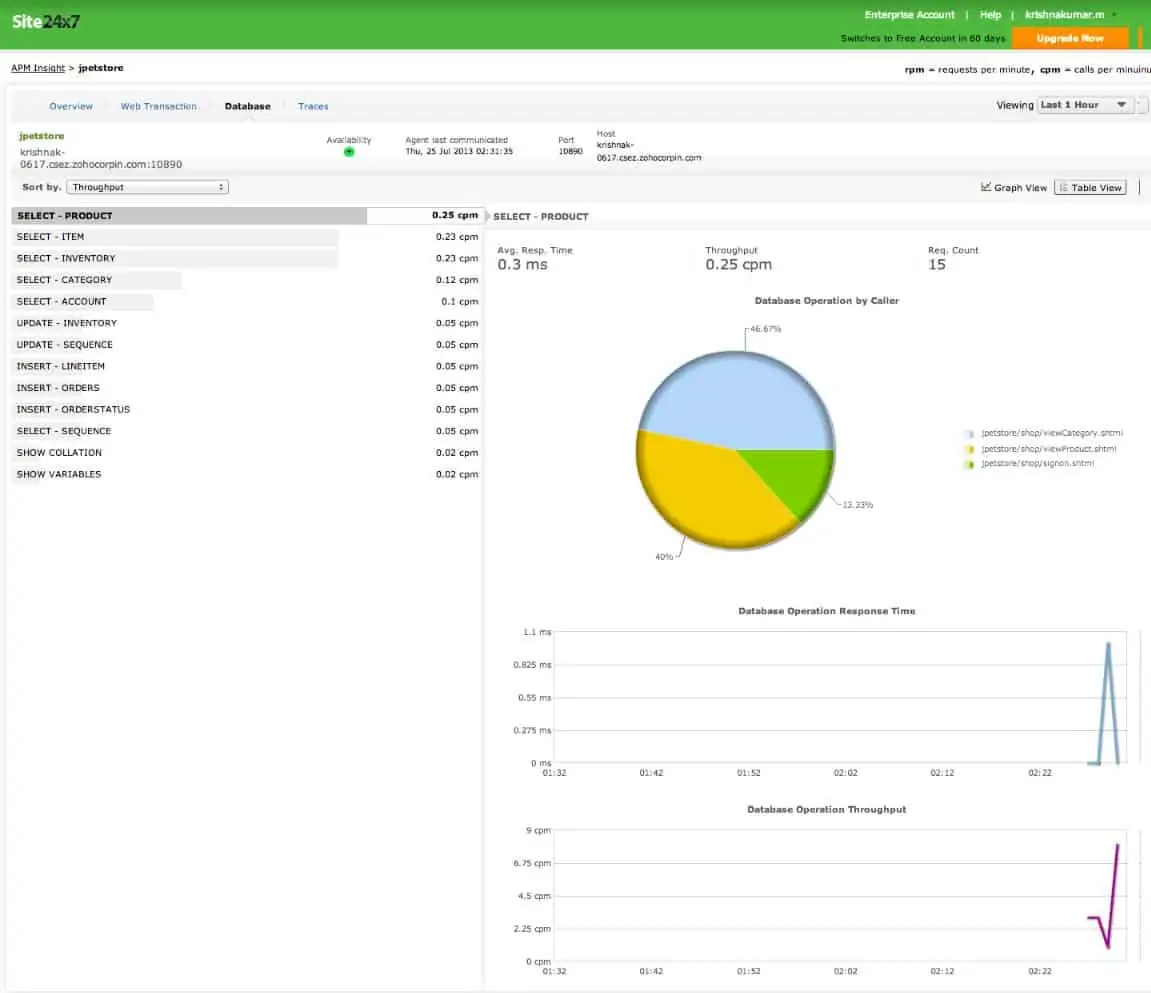
Site24x7 Infrastructure is a cloud-based monitoring system that covers database monitoring. It is able to monitor database instances that are managed by SQL Server, MySQL, Oracle, PostgreSQL, DB2, MongoDB, VoltDB, Cassandra, CouchDB, and ClickHouse DBMSs.
Key Features:
- SaaS package
- Combines with network and application monitoring
- Root cause analysis
Database monitoring is just one of the responsibilities of Site24x7 Infrastructure. It also monitors networks, servers, applications, services, and websites. Its purpose is to link together all of the application stack that lies behind a web page or a user-facing software package. By the use of this application dependencies map, the system can perform root cause traces to identify the cause of performance issues in front-end systems.
The database monitoring features of Site24x7 collects statistics on read and write activities, slow queries, aborted clients, threads, and open files. It monitors total temporary tables, space used by temporary tables, temporary tables on disk, and temporary table removal. The system also tracks database connection usage, aborted connections, and the maximum number of used connections.
Thanks to the application stack map, the Site24x7 Infrastructure system can spot when performance problems in other parts of the system are the cause of database performance problems. It can identify the resources of the supporting host that are used by the database and spot when those resources are running low.
Site24x7 Infrastructure database monitoring includes a system of performance and resource availability thresholds. This generates alerts if a problem arises or if resources are running low. The alerts can be forwarded to key staff by SMS, email, voice call, or instant messaging post. This alerting mechanism automates system supervision because it removes the need for human involvement unless things go wrong.
Pros:
- Monitors SQL Server, MySQL, Oracle, Postgres, DB2, and more
- Displays live activity statistics
- Performance alerts
Cons:
- The base plan has limited capacity and needs to be expanded for extra payments
The charge for Site24x7 Infrastructure is $9 per month if paid annually. You can access a 30-day free trial of the service.
Site24x7 SQL Server Performance Monitoring
Start 30-day FREE Trial
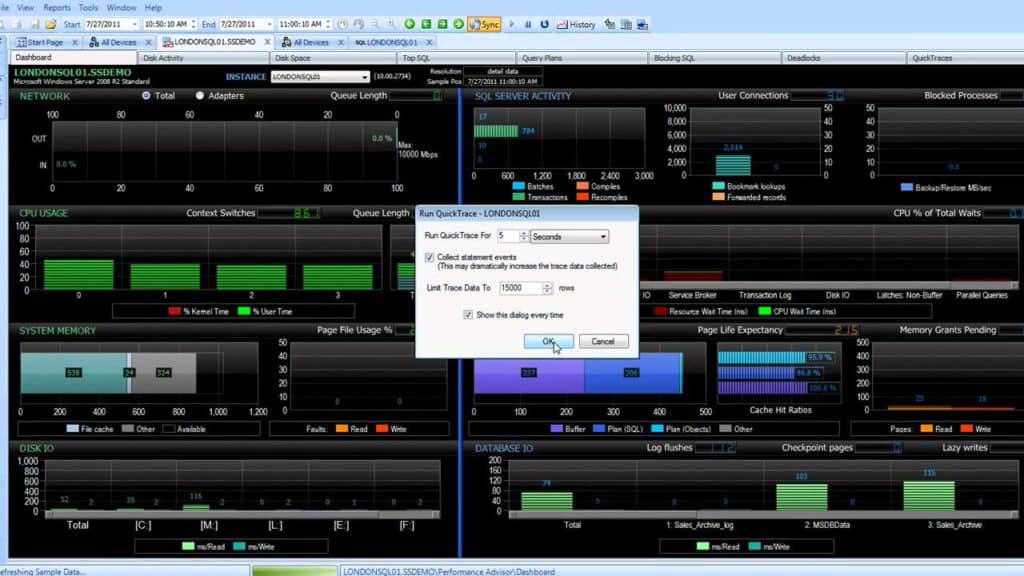
SentryOne SQL Sentry is a database performance management tool that can comfortably be used as a SQL query optimizer. With this tool, you can use preconfigured performance baselines to identify resource bottlenecks and other issues. There is also a block detection feature that shows you blocking processes in a hierarchical view. SentryOne also captures deadlocks by finding the process that resulted in a deadlock and identifies the changes you need to make when tuning.
Key Features:
- Resouce bottlenecks and locks
- Advises SQL improvements
- Live activity statistics
The performance analysis capabilities of SentryOne are vast. You can monitor SQL server metrics such as User Connections, Blocked Processes, Batches, Transactions, Compiles, Recompiles, Key Lookups, Forwarded Records, Backup MB/sec, and Send Queue/Redo Queue. You also have numerous metrics to monitor SQL Server Waits with CPU percent of Total Waits, Wait Time by Category, and Wait Time by class.
There are also over 100 alert conditions so that you aren’t restricted to manual monitoring. For example, if an SQL query is running slowly the program forwards you an alert. You can even go a step further and set SentryOne to activate a database action the moment a threshold condition has been triggered. The alerts system allows you to automate a substantial proportion of your SQL query optimization management.
Pros:
- Alerts for resource shortages or performance impairment
- Query analysis and database tuning
- Wait time classifications
Cons:
- Extra “maintenance fee” on top of purchase price
There are two SQL versions of SentryOne available for purchase: SQL Sentry Essentials and SQL Sentry. A license for SQL Sentry Essentials costs $995 (£750) with a $199 (£150) maintenance fee per year. SQL Sentry costs $2,495 (£1,881) with a maintenance fee of $499 (£376). With the former, you can view performance metrics in real time and with the latter, you benefit from extra features like query analysis and integrated query tuning. There is also a two-week free trial available for this database management software. You can download today and check it out for yourself.
SentryOne SQL Sentry
Start 14-day FREE Trial
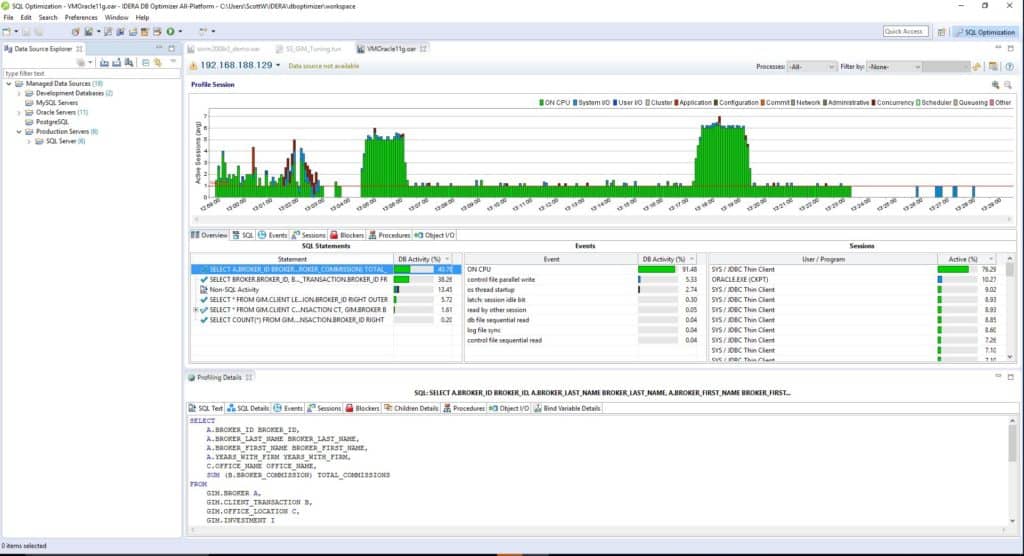
Few tools offer as straightforward an SQL tuning experience as Idera DB Optimizer. With DB Optimizer you can tune SQL on Oracle, SQL Server, DB2 and Sybase. The SQL tuning wizard automatically provides suggestions for tuning and improving SQL code. This ensures that your code performs the best it can.
Key Features:
- SQL query analysis
- Guided SQL optimization
- Database tuning
Monitoring for performance bottlenecks is another task that DB Optimizer does very well. You can view a graph of wait-time analysis to view the underlying causes of poor database performance.
There is also the option to run SQL queries with alternative execution paths until you find the most efficient SQL statement. Once you find a more efficient alternative you can make the change with one click.
Pros:
- Optimizes SQL Server, Oracle, Sybase, and DB2
- Live database activity graphs
- Spots bottlenecks and resource locks
Cons:
- Doesn’t work with MySQL
Overall DB Optimizer is a SQL tuning tool that is ideal for midsize organizations. DB Optimizer starts at a price of $572 (£431) per user. There is also a 14-day free trial.
Idera DB Optimizer
Start a 14-day FREE Trial
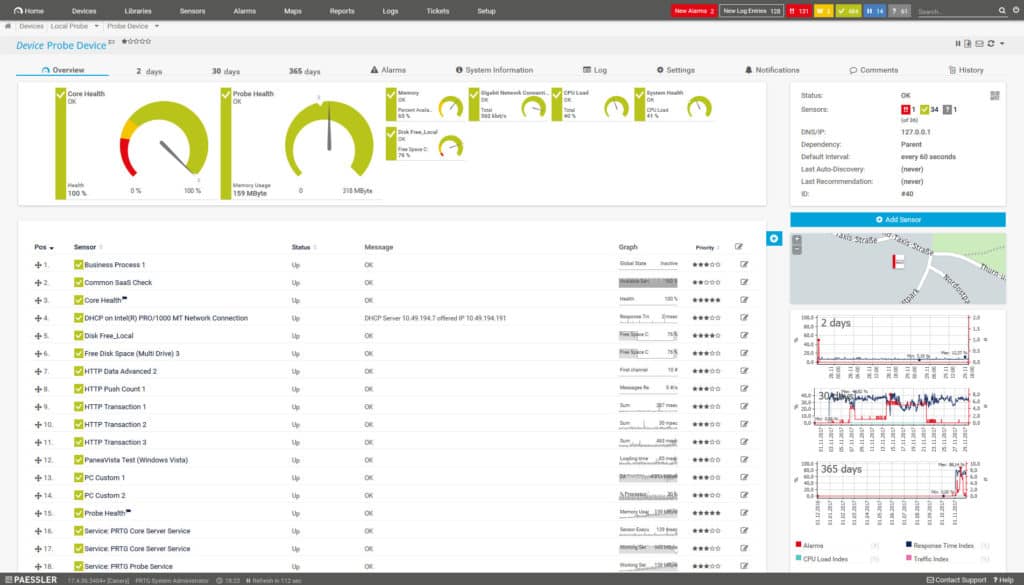
Next on this list of database management software, we have Paessler PRTG Network Monitor, a network monitoring tool that offers a diverse database monitoring experience. PRTG Network Monitor can monitor relational databases such as Microsoft SQL, Oracle SQL, MySQL, and PostgreSQL. Monitoring on this tool is achieved through the use of sensors that monitor individual databases. These sensors are preconfigured for each major database so that you don’t have to tweak anything once you start up for the first time.
Key Features:
- Separate sensors for different DBMSs
- Highlights long-running queries
- Database activity statistics
PRTG Network Monitor makes monitoring SQL query optimization easy, and measures how long an SQL query request takes from start to finish. The query execution time of the request is then shown on the dashboard so that you can see if there are any problems. In addition, you can also monitor your wider network to identify any performance issues that could have an influence on your database servers.
The PRTG Network Monitor alerts system helps to make sure that you don’t miss any key information. Once a problematic activity is recognized you are sent a notification immediately. Alerts are sent to you via email, SMS, or push notifications on Android, iOS, and Windows Phones. There is also an API that you can use to write your own notification scripts if you want further control over the notifications you request.
Pros:
- Monitors SQL Server, MySQL, Postgres, and Oracle
- Performance alerts
- Free version available
Cons:
- Doesn’t offer tips on database tuning or query optimization
PRTG Network Monitor is available as both a paid and a free tool. The paid versions of PRTG Network Monitor start from $1600 (£1,206) for 500 sensors and one server installation to $60,000 (£45,237) for unlimited sensors with five server installations. There is also a 30-day free trial.
Paessler PRTG
Start 30-day FREE Trial

Redgate SQL Monitor is another widely-used query optimization tool. Redgate SQL Monitor adds a state-of-the-art dashboard to help monitor SQL performance. Through the dashboard, you can view an overview of your SQL servers that updates every 15 seconds.
Key Features:
- Color-coded database instance statuses
- Database resource monitoring
- Performance alerts
In other words, you can easily stay on top of the status of your SQL infrastructure without missing anything important. The instance timeline is particularly useful as it shows you the CPU, Memory, Disk I/O, and Waits of your database.
There is also an alerts system to keep you updated on performance changes. Redgate SQL Monitor comes with over 40 customizable templates to warn you about all the common performance issues, whether a query is performing poorly or processes are being blocked.
Troubleshooting is another area that Redgate SQL Monitor does remarkably well. Once you discover a performance problem, the platform provides you with additional metrics to help pinpoint the root cause. Metrics can be compared to baseline activity to find what caused the problem. We feel this is a good SQL management tool with a good dashboard and great performance.
Pros:
- Monitors multiple database instances with an overview
- Drilldown detail for individual instance metrics
- Troubleshooting support
Cons:
- Free trial is only 14 days
In terms of pricing, Redgate SQL Monitor’s price depends on how many servers you wish to support. Between 1-4 servers the price per server is $1,565 (£1,179). Between 5-9 servers the price is $1,330 (£1,002) per server. If you require over 10 servers then you can contact the company directly for a custom quote. There is also a 14-day free trial which you can download here.
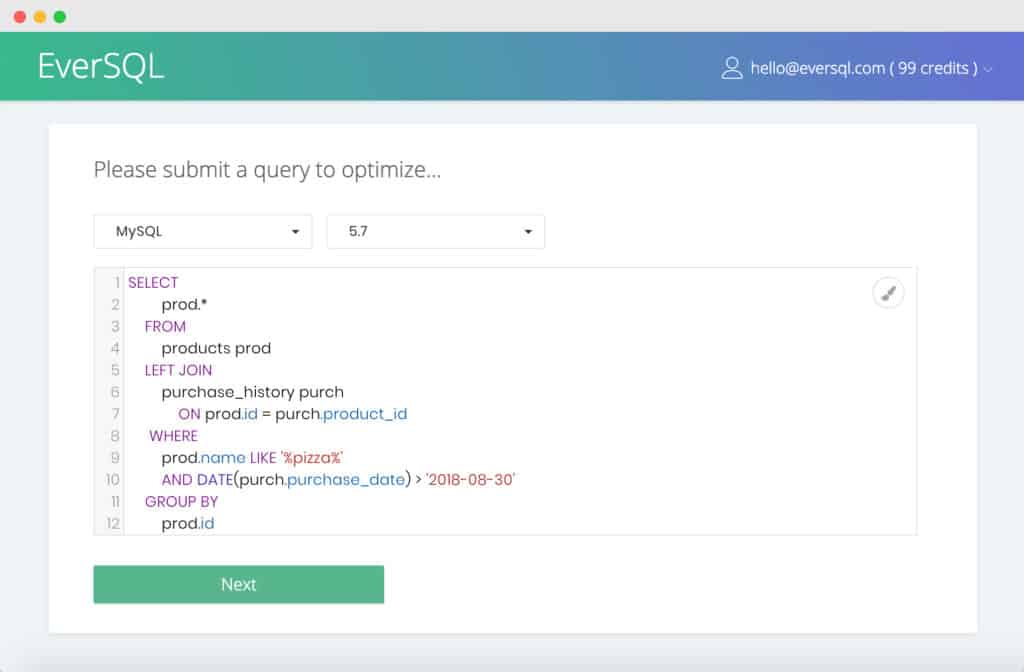
EverSQL is an SQL optimizer that is a popular choice for Structured Query Language tuning. The tool has a smart algorithm that automatically rewrites SQL queries to make them run faster. Once a query has been rewritten, you can view a code comparison with notes on all changes made to the query. These features combined make it convenient to increase the performance of queries without losing track of what changes have been made.
Key Features:
- Low cost
- Query analyzer
- Index recommendations
You can also use EverSQL to take indexing recommendations for multiple queries at the same time. Similarly, queries can be optimized directly from the MySQL slow log file. You can also add the schema to view advanced optimization options to further improve performance.
If you want to start optimizing and tuning queries through your web browser at a competitive price, EverSQL is highly recommended. EverSQL is compatible with MySQL, MariaDb, and PerconaDB database management systems (EverSQL may work with other database types with varying success).
Pros:
- Simple tool with a straightforward interface
- Automatically rewrites SQL queries to improve them
- Explanation of improvements aids programmer skills training
Cons:
- Package stops working if your query analysis quota runs out
EverSQL Is available for free with 50 query optimizations for 14 days. The Basic version costs $29 (£21.87) a month for 25 queries and the Plus version $135 (£101) for 100 queries. There is also a Premium version which offers a custom number of credits but you need to contact the company directly. You can download the free trial version of EverSQL here.
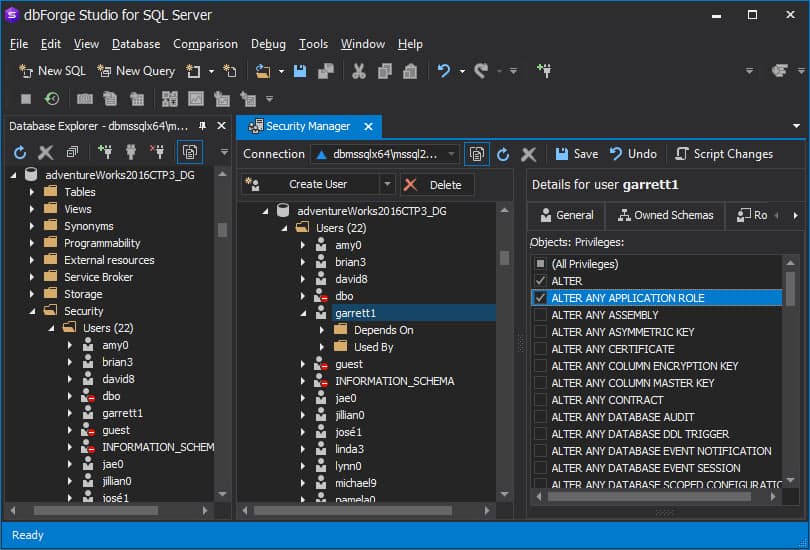
dbForge Studio is one of the top SQL query optimizers on this list. dbForge Studio comes with a range of server management tools to help monitor server performance and tune coding. This tool adds code completion, SQL formatting, SQL snippets, and code navigation to allow you to tune SQL code more easily.
Key Features:
- Assists with data transfers
- Formatted SQL editor
- Index manager
One tool that is particularly useful is the Index Manager which monitors SQL indexes and highlights index fragmentation issues. With the Index Manager, you can find databases that aren’t performing well. It functions well as a SQL performance monitor.
If you need to transfer data from server to server the Data Compare feature is vital. With Data Compare you can synchronize data from multiple tables, analyze the differences and generate reports. dbForge Studio is thus one of the best tools for data synchronization on this list.
There are three versions of dbForge Studio for purchase; the Standard, Professional and Enterprise Versions. The Standard version starts at $249.95 (£188.45) with basic code competition and a visual query builder.
Pros:
- SQL query builder
- Query analyzer
- Unit tester
Cons:
- A different package for each DBMS
The Professional version costs $499.95 (£376.96) with advanced code completion and features like data compare and sync, plus a T-SQL code analyzer. The Enterprise version costs $699.95 (£527.76) and comes with Source Control and a T-SQL Unit Test. There is also a free trial version you can download here.
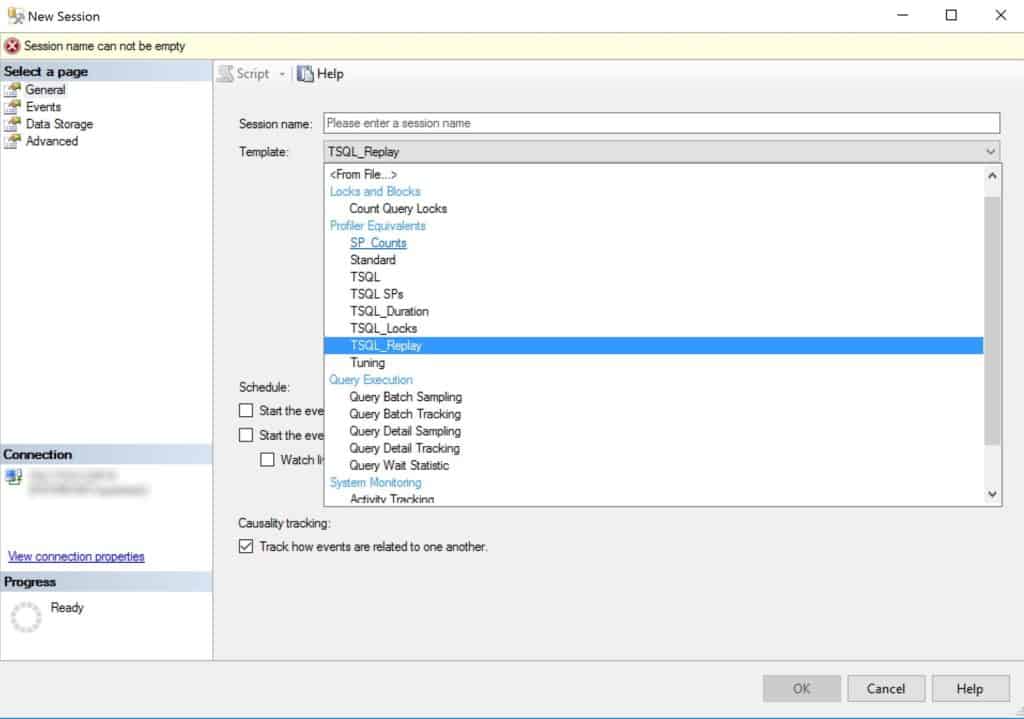
SQL Server Management Studio is a widely-used query optimizer for Windows. On SQL Server Management Studio, monitoring the performance of queries is done through the Database Engine Tuning Advisor or DTA. The DTA is used to make queries run faster. It can add indexes and partition queries to eliminate performance bottlenecks and decrease run time.
Key Features:
- Free tool
- SQL query analysis
- Database tuning
SQL Server Management Studio is available for Windows10, 8, 8.1, 7, 2012, and 2008 R2. If you’re looking for an SQL tuning tool that is easy to use and doesn’t come with a substantial price tag with good data reporting, SQL Server Management Studio is worth considering.
Pros:
- Produced by Microsoft for SQL Server
- Database object analysis
- Indexing recommendations
Cons:
- Only for SQL Server
SQL Server Management Studio is a relational database tool that is ideal for smaller enterprises on account of its low cost. SQL Server Management is completely free and can be downloaded from the Microsoft website here.
SQL Query Optimization FAQ
Which software is best for SQL?
There is no “best” SQL software. Some programmers prefer to write SQL in a plain text editor, while others like SQL editors that highlight keywords and match up brackets; non-technical staff would benefit from SQL assemblers that suggest syntax and clauses.
Is SQL software free?
There are many free SQL optimizers and editors available and many of them are no use. Finding the right software for SQL creation and optimization is a personal journey.
What is SQL Query Analyzer?
There is no single product called SQL Query Analyzer, rather this is a type of utility that scans existing SQL code and suggests performance improvements. For example, the SolarWinds Data Performance Analyzer includes an SQL query analyzer.
How do I monitor SQL performance?
SQL query performance monitoring requires a number of different factors to be logged while the query is running. This is difficult to perform manually, so you really need to invest in monitoring software that supports that task.
What is the best free SQL database?
The best way to get SQL database software for free is to acquire it as part of a bundle of services, such as a database system that is included with a web hosting package. It is important to get an SQL database system that is widely used and is supported by extensive user training and online help advice.
Can I run an SQL query online?
There are many useful online services that enable you to run SQL online. Look for web schools that include SQL editors and then check out virtual server providers to get a managed RDMS online.
If you need to monitor SQL queries as part of your day-to-day workload we highly recommend that you invest in a query optimization tool. Database management software like SolarWinds Database Performance Analyzer and SentryOne SQL Sentry allows you to keep a watchful eye over SQL query performance to make sure that your servers run efficiently.
For those organizations with lower budgets Microsoft SQL Server Management Studio can help you to visualize SQL server performance. Though it isn’t as advanced as some of the other SQL server management tools on this list. However, it provides a solid user experience.











